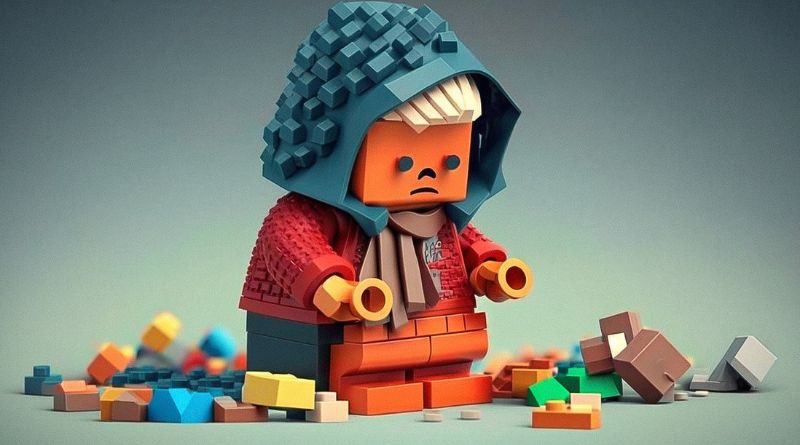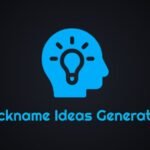In the ever-evolving world of artificial intelligence, AI has increasingly found its way into creative fields, enabling designers and artists to bring their ideas to life in new and exciting ways. One of the most intriguing applications of AI in design is the creation of Lego style designs AI prompt. This innovative concept merges the simplicity and nostalgia of Lego with the power of AI, offering endless possibilities for both experienced designers and newcomers to explore. Whether you’re looking to create intricate models, develop new products, or simply experiment with the Lego aesthetic, AI prompts can help bring your ideas to life with ease and precision.
Table of Contents
In this article, we will delve into what Lego style designs are, how AI is used to generate these designs, the benefits of using AI prompts for Lego creations, and how to get started. We’ll also answer some frequently asked questions to clarify any doubts you may have.
What Are Lego Style Designs?
Lego style designs refer to creations inspired by or directly made using the iconic Lego building blocks. These designs often feature blocky, geometric patterns and structures, making use of the colorful, modular pieces that have become synonymous with Lego.
While Lego bricks are typically used to build tangible models, Lego style designs can also be digital or conceptual, showcasing the same aesthetic and building principles. The beauty of Lego style designs lies in their simplicity — each model, whether a spaceship, castle, or animal, is constructed using basic geometric shapes that fit together in creative ways.
With the advent of AI prompts, the process of creating Lego style designs has become even more streamlined. Using advanced AI algorithms, designers can now generate intricate Lego-style designs based on simple textual prompts or images, significantly enhancing the design process and creative possibilities.
How Does Lego Style Designs AI Prompt Work?
An AI prompt is essentially a command or instruction given to an AI model, asking it to generate content based on specific criteria. When applied to Lego style designs, an AI prompt can produce a wide variety of results, from basic geometric patterns to highly complex, detailed structures.
Here’s how it typically works:
1. Input Text or Image
To start the process, you provide the AI model with a prompt. This can be a simple description such as “build a Lego-style robot” or “create a Lego-style spaceship.” Alternatively, you could upload an image that you’d like the AI to interpret and replicate in a Lego-inspired format. The more specific your prompt, the more tailored the AI’s output will be.
2. AI Processing
The AI model uses advanced algorithms to process the input. It analyzes the prompt, understanding the key features and elements that should be included in the design, such as shape, color, and scale. The model then generates a design based on its understanding of Lego-style aesthetics.
3. Output
Once the processing is complete, the AI provides you with a digital Lego-style design. This could be a 3D model, a 2D image, or even a set of instructions for building a physical Lego model. The output can often be further customized, allowing you to tweak certain elements, such as the color scheme, level of detail, or size of the design.
The Benefits of Using Lego Style Designs AI Prompt
1. Enhanced Creativity
AI models are capable of thinking outside the box and can offer design suggestions that a human might not have considered. This can spark new ideas and inspire greater creativity in your Lego-style projects. Whether you’re a hobbyist or a professional designer, AI prompts can help push the boundaries of what’s possible with Lego bricks.
2. Time Efficiency
Designing Lego models manually can be time-consuming, especially if you are working on complex structures or large-scale projects. With an AI prompt, you can generate a design quickly and refine it according to your preferences. This allows you to spend less time on the preliminary stages of design and more time on the creative execution.
3. Accessibility for All Skill Levels
AI-generated Lego designs can be a fantastic tool for beginners who are just starting with Lego building. The prompt system allows them to experiment with different styles and techniques without needing extensive prior knowledge of Lego design. On the other hand, advanced designers can use AI to create detailed and intricate designs, helping them bring their visions to life with precision and ease.
4. Customizable Designs
AI prompts give you the ability to make adjustments to the designs based on your preferences. Whether you want a more detailed structure, a specific color palette, or different proportions, AI tools can accommodate these changes. This level of flexibility allows for highly personalized Lego designs that reflect your unique taste and creativity.
5. Inspiration for Lego Projects
Sometimes, the hardest part of a Lego project is getting started. With the help of AI-generated designs, you can easily find inspiration for your next Lego creation. Whether you’re working on a personal project or looking for ideas to share with others, AI can help jumpstart your creative process.
How to Get Started with Lego Style Designs AI Prompt
Getting started with Lego style designs AI prompt is simpler than you might think. Here’s a basic guide to help you begin:
1. Choose an AI Design Platform
There are several AI platforms available that specialize in design generation. Some popular platforms include DALL·E, MidJourney, and DreamStudio, which can generate Lego-inspired designs based on text prompts. Choose a platform that suits your needs and sign up for an account.
2. Create Your Prompt
Once you have your platform set up, it’s time to create your prompt. Think about the type of Lego design you want to generate. For example, you might want a Lego model of a car, a building, or a fictional character. Write a detailed description to guide the AI model in generating your design. You can even provide additional instructions, such as “use red and blue bricks” or “design a minimalist Lego structure.”
3. Generate the Design
Submit your prompt and allow the AI to process the request. Depending on the platform, it may take a few moments for the design to be ready. Once the design is complete, you can view it in a 3D format, download it as a file, or make any necessary adjustments.
4. Refine Your Design
AI-generated designs are often just the starting point. After reviewing the output, you may want to tweak certain elements, such as the colors, shapes, or proportions. Some platforms offer editing tools that allow you to modify the design further, while others might allow you to export the design to other software for further refinement.
5. Build Your Lego Model
If you wish to turn your design into a physical model, many AI platforms provide instructions for building your Lego creation. These instructions will tell you which pieces to use and how to assemble the structure step by step. You can use your own Lego bricks or order additional pieces online.
FAQs about Lego Style Designs AI Prompt
1. What is a Lego style design AI prompt?
A Lego style design AI prompt is an instruction given to an AI model to generate a Lego-inspired design based on a given description or image. The AI interprets the prompt and creates a design that mirrors the blocky, modular aesthetic of Lego bricks.
2. Can I generate 3D Lego designs using AI?
Yes, many AI platforms can generate 3D models of Lego designs. These models can be viewed from different angles, modified, and even used as building instructions.
3. Do I need advanced design skills to use AI prompts for Lego designs?
No, one of the main benefits of using AI prompts is that they are accessible to people of all skill levels. Beginners can use simple prompts to generate designs, while advanced users can fine-tune the results for more intricate projects.
4. Can I use AI to create Lego designs for commercial use?
It depends on the platform you use and the terms of service associated with it. Some AI tools allow users to use generated content for commercial purposes, while others may have restrictions. Always check the platform’s licensing agreements before using generated designs for commercial purposes.
5. How accurate are AI-generated Lego designs?
The accuracy of AI-generated designs varies depending on the platform and the specificity of your prompt. While AI can generate highly detailed designs, there may still be a need for refinement to ensure the design is precisely what you envision.
Conclusion
The concept of Lego style designs AI prompt opens up new and exciting possibilities for designers, hobbyists, and Lego enthusiasts alike. By harnessing the power of AI, anyone can create detailed, imaginative Lego models without the constraints of manual design. Whether you’re looking to generate quick ideas, create intricate models, or simply experiment with Lego aesthetics, AI prompts provide an invaluable tool for expanding your creative potential. As technology continues to advance, we can only expect even more exciting developments in the realm of AI-powered design.






